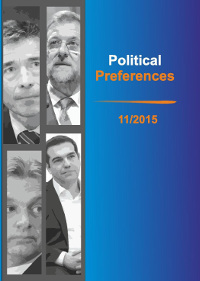

In many modern democracies, the leaders who make important influential political decisions are highly likely to be party politicians or indeed party leaders. Very often they cannot prepare an adequate strategy for their political parties because it is usually impossible to find out all necessary elements for projecting the goals. It is not surprising that political parties are the most important organizations in modern politics and in the contemporary world, only a few states do without them. The reason that political parties are well-nigh ubiquitous is that they perform functions that are valuable to many political actors. Political parties play a major role in the recruitment of top politicians, on whom the momentous and painful political decisions often fall. With very few exceptions, political chief executives are elected on the slate of some established political party, and very often the head of government continues to serve as the head of the political party that propelled him or her into office. Democracy may be conceived as a process by which voters delegate policy-making authority to a set of representatives, and political parties are the main organizational vehicle by which such delegation takes place. The main aim of this article is focus on the minority government, which are especially common in the Scandinavian countries. They can be more easily formed and maintained where the party system makes it difficult to secure support for an alternative majority coalition to be formed, a vote of investiture is not required, and a government can stay in office unless there is an absolute majority against it. In the article will be emphasized some case studies of Denmark minority government formation and durability. General findings will be confronted with empirical data, which will allow to formulate conclusions about the specific of minority cabinet in Denmark.
Key words:
party leaders, minority government, coalition, Nordic States, Denmark, party behavior, elections, majority, parliamentary members
Download files
Citation rules

No. 11 (2015)
Published: 2015-06-01
 10.31261/polpre
10.31261/polpre